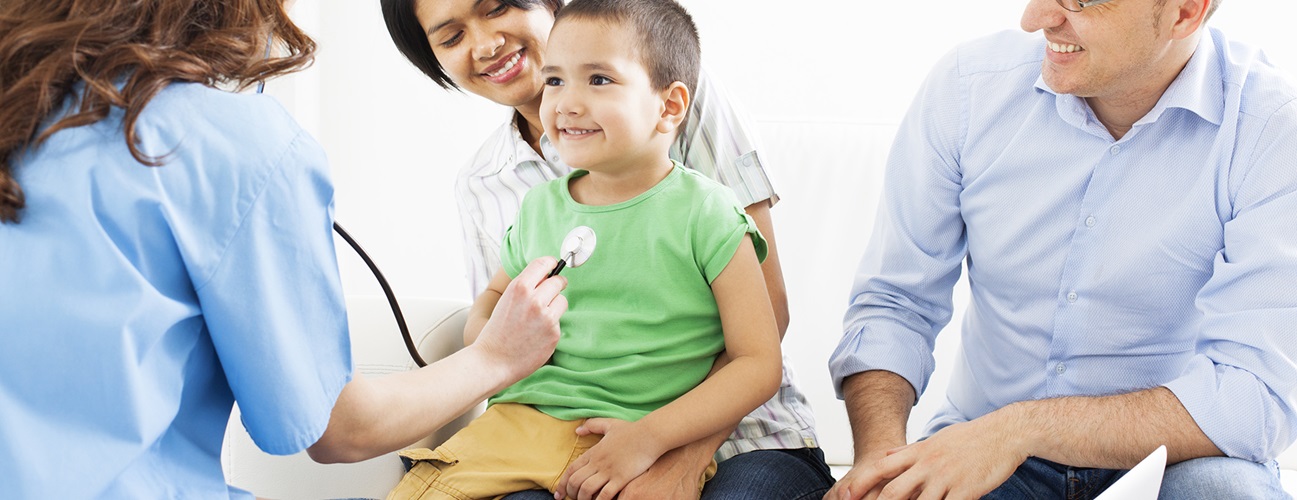Kawasaki Disease
Featured Expert:
Kawasaki disease is a rare heart condition that causes a high fever and inflammation of the blood vessels. It usually affects children under the age of 5. It is the most common form of acquired (not present at birth) heart disease in children in developed countries. In the U.S., Kawasaki disease affects between 9 and 20 children out of 100,000 each year.
Johns Hopkins Children's Center pediatric cardiologist Benjamin Barnes outlines what you should know about Kawasaki disease.
What is Kawasaki disease?
Kawasaki disease is a heart condition that develops suddenly. The condition causes the immune system to attack blood vessels, which become inflamed and swollen. Kawasaki disease tends to affect the coronary arteries, which carry blood to the heart muscle.
Other names for Kawasaki disease are Kawasaki syndrome and mucocutaneous lymph node syndrome.
Kawasaki Disease Risk Factors
Known risk factors of Kawasaki disease include:
- Age: Kawasaki disease mostly affects children younger than 5.
- Sex: Boys are slightly more likely than girls to develop Kawasaki disease.
- Ethnicity: Kawasaki disease is more common in people of Asian or Pacific Island descent.
Kawasaki Disease Causes
Experts do not know exactly what causes Kawasaki disease. It is not contagious, so it cannot spread from person to person. It might be the result of changes to certain genes or related to viral or bacterial infections. Infections may cause the immune system to attack the blood vessel walls by mistake and cause inflammation.
Kawasaki Disease Symptoms
The most common symptom of Kawasaki disease in children is a high fever (over 100.4 degrees) that lasts for five days or more. At least four of the following symptoms are also usually present:
- “Strawberry tongue,” which is bumps or white spots on the tongue
- Peeling skin on the fingers and toes (usually in the second or third week of illness)
- Red eyes
- Redness and inflammation of the hands and feet
- Redness and swelling of the lips, mouth, tongue and throat
- Skin rash (see below)
- Swollen lymph glands
Kawasaki Disease and Skin Rash
A rash that forms between the chest and leg area or in the genital area is common with Kawasaki disease. This rash is known to go away within one week.
Atypical Kawasaki disease
Some children with Kawasaki disease have a fever with fewer than four of the other typical symptoms. This is known as atypical, or incomplete, Kawasaki disease.
Kawasaki disease and COVID-19
There is not yet a known link between Kawasaki disease and COVID-19. Some children with COVID-19 also develop a condition called multisystem inflammatory syndrome in children (MIS-C). MIS-C can cause symptoms similar to Kawasaki disease, including fever and rash. See your child’s health care provider if you notice any of these symptoms.
Kawasaki Disease Diagnosis
Your child’s health care provider can usually diagnose Kawasaki disease by his or her symptoms and a physical exam. They may also order:
- Blood and urine tests
- Echocardiogram (echo)
- Electrocardiogram (ECG)
Kawasaki Disease Treatment
Prompt treatment of Kawasaki disease can greatly reduce the risk of heart damage and other complications. Children who have Kawasaki disease stay in the hospital for several days as they receive:
- Aspirin: High-dose aspirin therapy controls fever and prevents blood clots. Most children transition to low-dose aspirin therapy two weeks after the onset of symptoms and continue for about eight weeks.
- Intravenous immunoglobulin (IVIG): IVIG is a product derived from plasma (the liquid portion of blood) that contains antibodies. The antibodies help prevent heart damage.
- Corticosteroids: Children may receive steroids if IVIG isn’t effective.
Kawasaki Disease Complications
Left untreated, Kawasaki disease can cause serious damage to the heart muscle and coronary arteries. Potential complications include:
- Aneurysms (weak, bulging spots in blood vessels)
- Arrhythmias (abnormal heart rhythm)
- Blood clots, which can lead to heart attacks
- Coronary arteritis (inflammation of the coronary arteries)
- Heart valve problems
- Myocarditis (inflammation of heart muscle)
Life After Kawasaki Disease
After receiving treatment for Kawasaki disease, most children recover fully. Long-term follow-up care usually isn’t necessary. However, children who have aneurysms or other complications related to the disease will need lifelong monitoring with a cardiologist.





